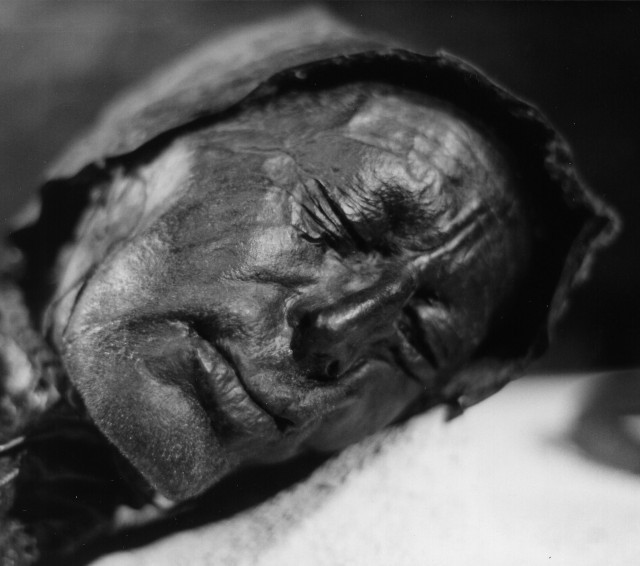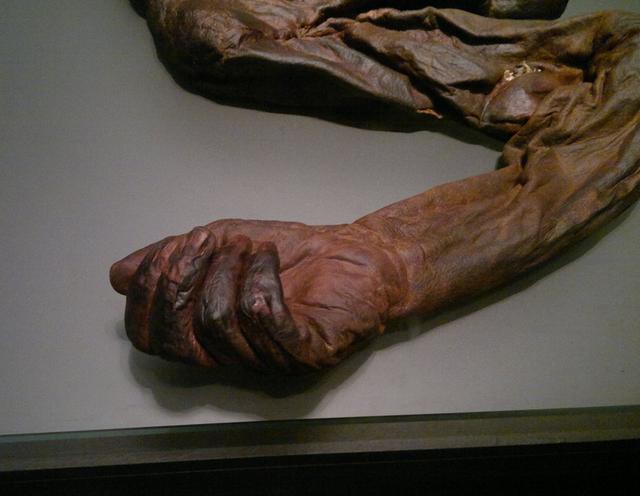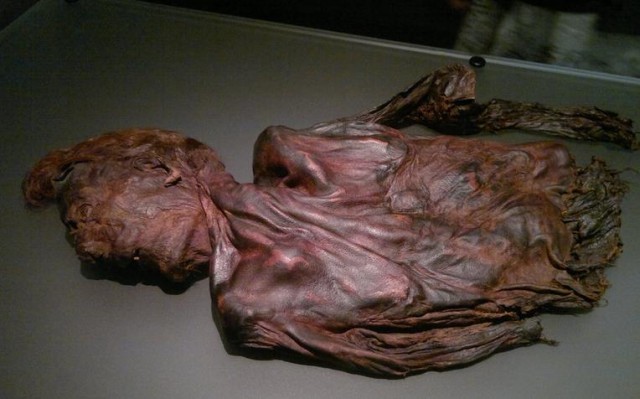The Bog People Were Waiting
by Sara Morrison

A good six thousand or so years ago, Northern Europe was covered in swamp-like, stagnant pools of dead plant. These bogs happened to be great places to get rid of stuff, and so our ancestors, being not much different than we are today, really, filled them with refuse and the occasional body.
We’re not exactly sure why those bodies were put there. The prevailing theory is they were human sacrifices, but it’s entirely possible that bogs were just convenient places to store dead people. Either way, there they stayed, buried and preserved for thousands of years, just waiting for the chance to scare the crap out of an eight-year-old girl whose father should have known better than to keep a book of bog body photos out for her to read, which is how I met the Bog Men.
The anaerobic environment of the bogs meant that any organic material sucked into them remained remarkably free of decomposition — so much so that we can determine, in some cases, their last meal. Some were so well preserved that, when found — usually by some poor, unsuspecting Scottish peat cutter — they were thought to be recent murder victims.
They were, then, a fantastic window into the lives of humans thousands of years ago — what they wore, what they ate, what they used for hair gel (imported plant oil and pine resin made for a decent mohawk) — which was what attracted my dad’s interest in them. He brought The Bog Man and the Archaeology of People home from the library. I saw him reading it and, wanting to be as smart as he was, asked if I could read it, too. He handed it to me and walked away, oblivious to the damage he’d done.
Obviously, I flipped to the photo section of the book first, full of large, full-color photos of various bog bodies. Yes, there was Tollund Man, the rock star of the bog body world. His head is so well-preserved, it is often said, that he looks like he could simply be sleeping.
But this is a lie! Yes, Tollund Man’s facial features have stayed remarkably intact, down to the chin stubble and the furrowed brow. But his skin is black, dyed from soaking in dark bog chemicals for the last six millennia, and he’s naked except for a belt, a wool cap, and the noose that ended his life, which is still tightly wrapped around his neck. And there’s the rest of his body, distorted and twisted from being crushed under the weight of the bog for so long, then partially destroyed by the excavation process. Aside from his head and feet, Tollund Man is skeletonized, wrapped in leathery flaps of skin stretched tightly over his bones. The effect is a half-skeleton, half-flesh man-creature so much more terrifying than if it had just been one or the other.

Old Croghan Man photographed by Mark Healey.
Tollund Man is the least frightening bog man, or woman, on offer. We have dozens of horrible, disgusting bog bodies, complete with photos that I don’t suggest you look at if you are an impressionable child with a wild imagination.
Oh, look! There’s Red Franz, who is basically a skull with long red hair on his head, chin, and Larry Hagman-length eyebrows. And Lindow Man, with his squashed face-thing and the lower half of his body missing. Old Croghan Man is just a torso with arms, his well-preserved entrails spilling out. Grauballe Man’s gaping, ear-to-ear throat wound looks like it was cut only yesterday; his head is stuck twisted backwards. Damendorf Man has been pressed completely flat by the weight of the bog, turning him into the worst version of Flat Stanley you could possibly imagine.
There are a few teenagers, like Yde Girl, and even children, like the stab-wound-ridden Kayhausen Boy. When he died, he was about the same age as I was when I first saw him in my dad’s book. We could have been playmates, but for the fact that he was the scariest thing I’d ever seen in my life, and dead.
And yet, I couldn’t look away, so I kept reading. Then night came, and I put the book down and went to bed.
In my dreams, I could see the Bog Men just as clearly. They’d come to life and were doing that old school zombie shuffle-walk towards my house. I imagined walking around my backyard one day, stepping on the wrong spot of that muddy, probably bog-like, patch by the trees, and a black, leathery hand with bone fingers shooting out of the earth, grabbing my ankle, and pulling me down below, where all his disgusting scary friends were waiting for me — empty sockets where their eyes used to be, noses smashed sideways, mouths frozen open and screaming.
I didn’t get much sleep that night, nor for the following several nights. Dad returned the book to the library, probably after getting an earful from Mom about what constitutes age-appropriate reading material for an eight-year-old and the dangers of underestimating his daughter’s vivid imagination. After that, there was an unspoken rule in our family that we would never speak of the Bog Men again and Bog Men books were not to be brought home from the library. If an occasional special about Bog Men came on the TV, the channel was quickly changed.
We didn’t even play Boggle.

Clonycavan Man photographed by Mark Healey.
As those Scottish peat cutters found out, Bog Men don’t stay buried forever. Fifteen years later, I was driving along Santa Monica Boulevard in my red Ford Focus when I saw it — an advertisement for an upcoming exhibit at the Natural History Museum of Los Angeles: “The Mysterious Bog People.”
And there was an artist’s reconstruction of that horrible Yde Girl’s face. And it wasn’t just one ad, either; the streetlights were festooned with banners for the exhibit. Everywhere I drove, Yde Girl’s face — and the dates when she and five of her terrible friends were stopping by my city on their triumphant world tour — was hanging down from the lampposts. For the next six months, I would be sleeping just a few miles away from my nightmares.
As there was no escape, I decided to use this as an opportunity. I had a chance to actually face my childhood fear in the desiccated flesh. Yde Girl was only 4’7″. When she was alive, she had scoliosis. As a bog body, she didn’t even have legs or arms — just feet, a right hand, a torso and her head. I felt like I could totally take her in a fight if she happened to reanimate during our face-to-partial-face meeting. I was braver now than when I was eight. I would go to the museum and see the Bog Men.
I wasn’t about to go alone. My dad was in town for a business trip, and stayed over an extra day. We went to the Natural History Museum. He held my hand as we walked inside.
Sara Morrison is a journalist in New York City.
